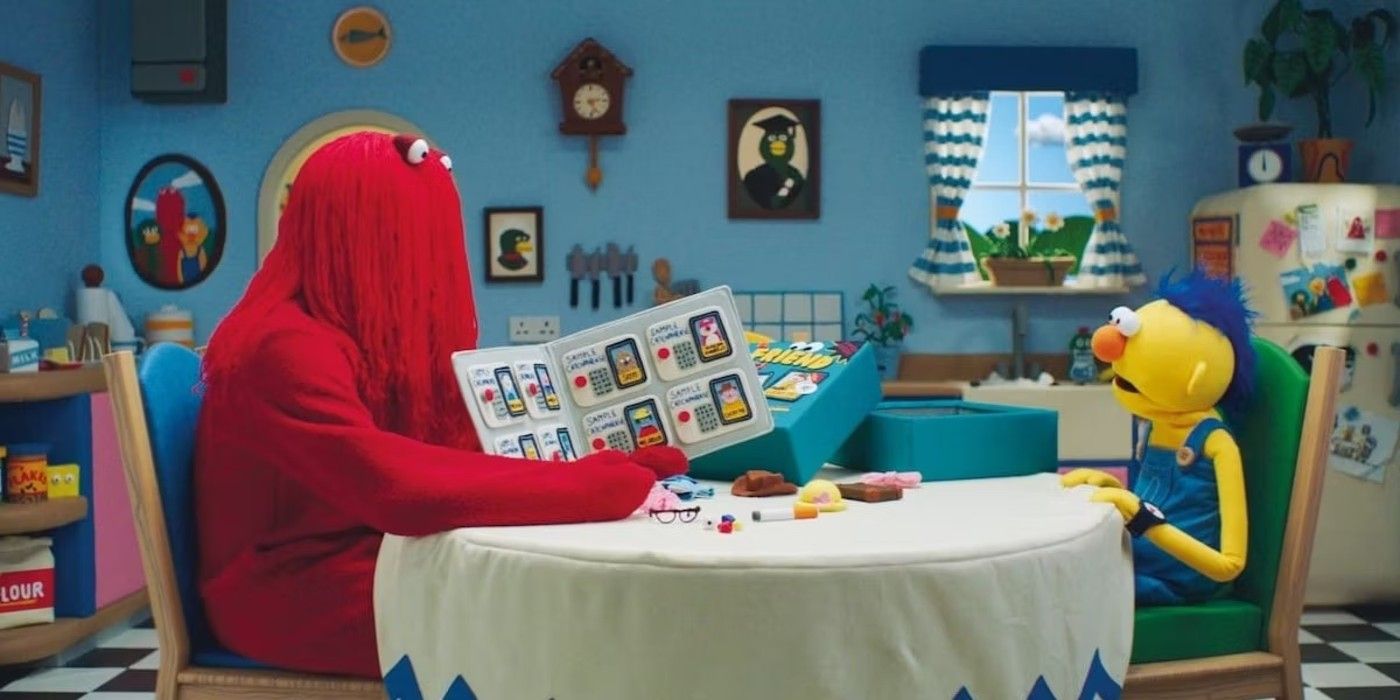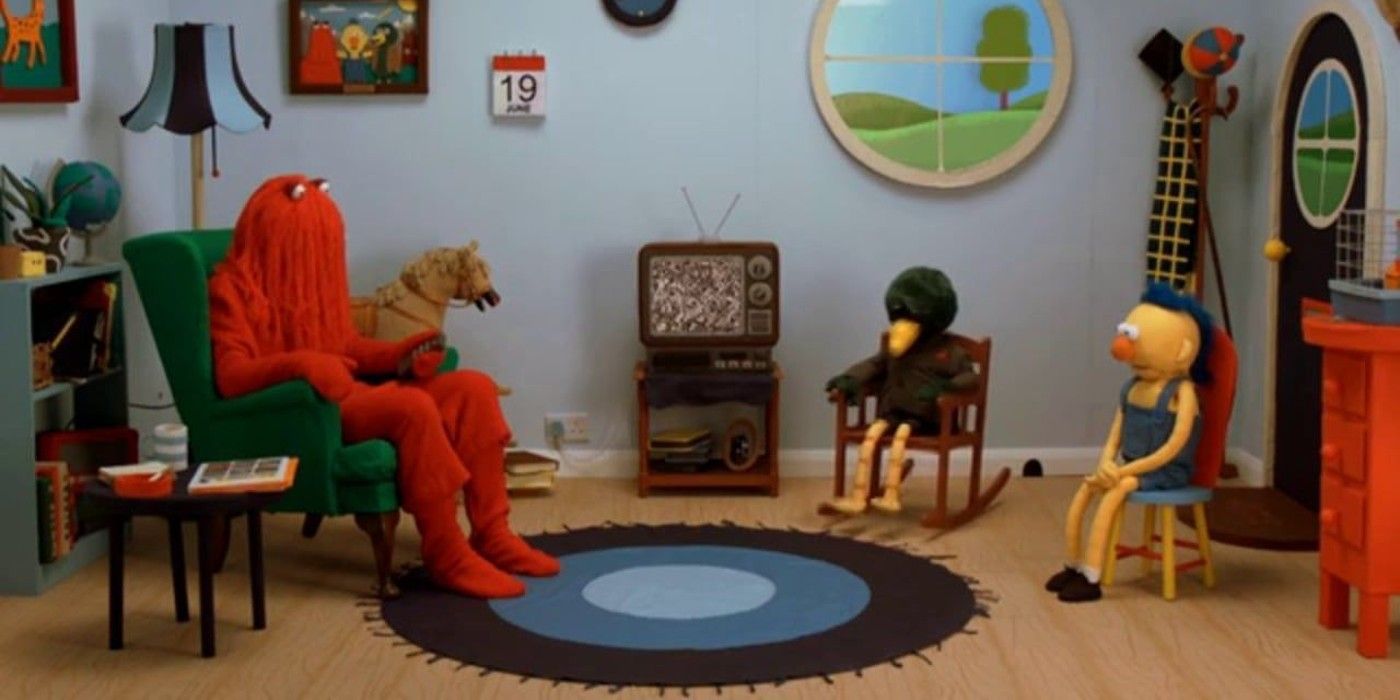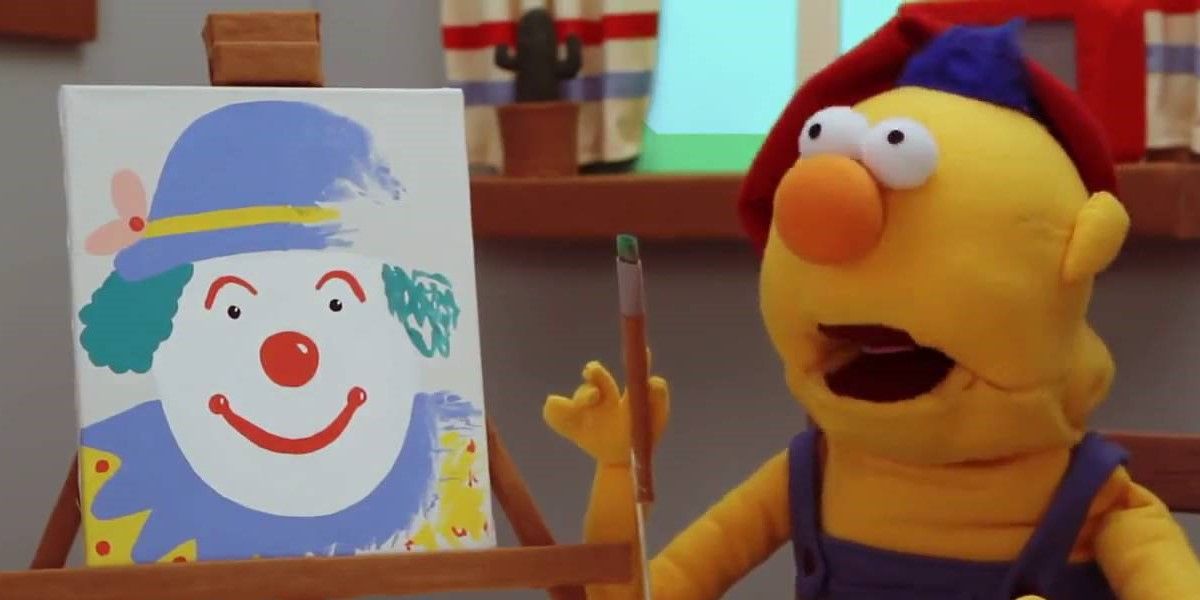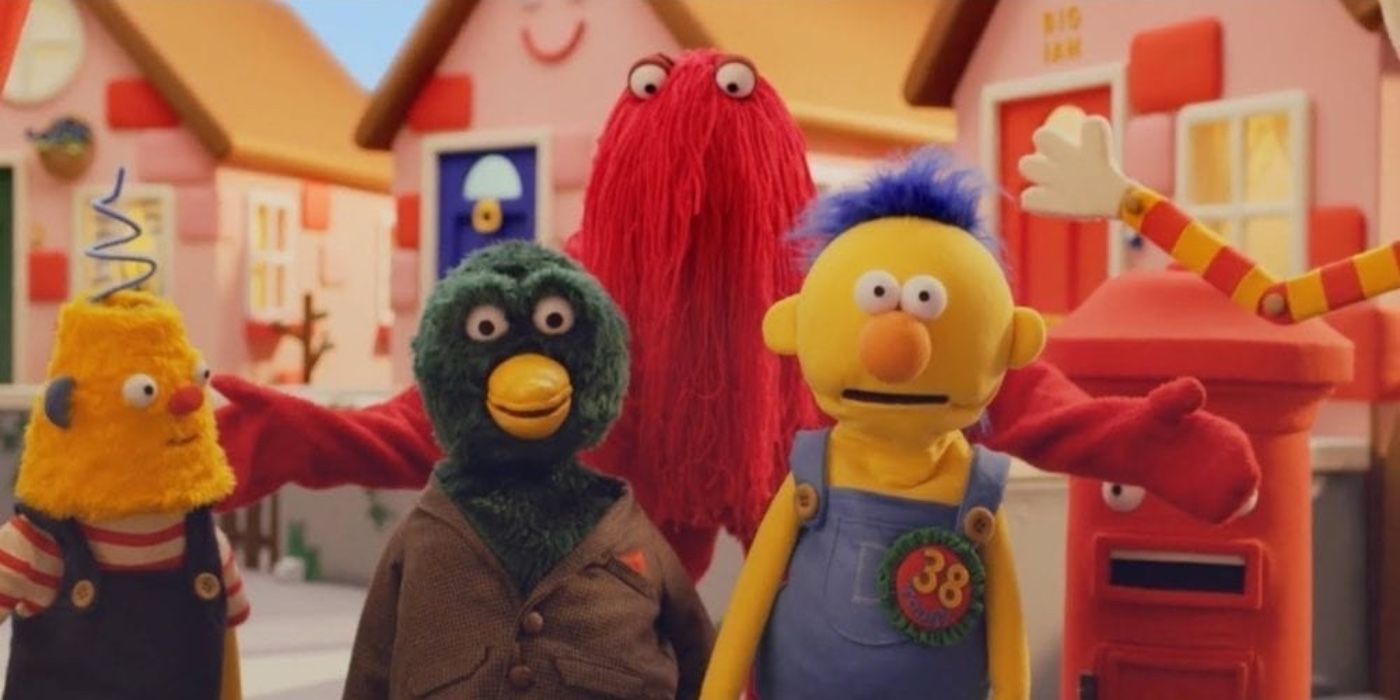Few YouTube videos have the staying power that Don't Hug Me I'm Scared does. From the first video's release on YouTube in 2011, Don't Hug Me I'm Scared (referred to colloquially as DHMIS) made a reputation for itself by appearing – on the surface – to be a spoof of children's television shows like the American Sesame Street or British Fingerbobs. Its bright colors and cheerful song about ''being creative'' quickly descended into gory carnage for seemingly no reason at all, but this juxtaposition of the innocent and the horrific is what gave DHMIS its online cult status. Subsequent episodes had the same formula, and bore hours upon hours of analyses on YouTube and Reddit.
DHMIS creators Becky Sloan and Joseph Pelling have long wanted their series to make the jump into television. The six existing episodes, released from 2011 to 2016, were entirely crowd-funded which is why they took so long to produce. But in 2018, Sloan and Pelling announced via the teaser ''Wakey Wakey'' that DHMIS was making the jump to television, with funding from heavy-hitters Blink Industries, Conaco and Super Deluxe. The new series showed its pilot at Sundance Film Festival in 2019 before getting picked up by Channel 4 for six episodes in 2020. After six years of waiting, longtime fans of DHMIS will finally get to see those six episodes on Sept. 23.
The History of Don't Hug Me I'm Scared
DHMIS began life as a standalone video, but its runaway success and induction into the metaphoric Internet hall of fame for its shocking, surreal visuals quickly spawned five sequels. The main medium of the series was, and still is, puppetry with some animated and live-action elements – owing to Sloan's background in fine arts and Pelling's in animation. In fact, they met during art school and joined the This Is It Collective, who helped produce the initial viral video. The wild success of the first video, uploaded to YouTube and Vimeo ''on a whim,'' led to an invitation from Sundance and financial backing from British-based Channel 4's Random Acts to make more. The series has a reputation for being remarkably well-produced and high-quality despite its lack of corporate backing or sponsorships.
Subsequent episodes took on the same storyline as the original: the three main puppets, known in the fandom as Red Guy, Duck and Yellow Guy, all sit around in their home and a question about the time or researching led to a visit from a ''teacher'' character, who delivered a lesson in song format. Children's shows often follow this format, with the protagonists and teachers joining in a song together to learn about different aspects of the world and relationships. The six existing episodes include songs about creativity, time, love, computers, healthy eating and dreams before they turn into a bloody, terrifying nightmare with the protagonists getting dissected (or in one case, eating each other). The reasoning for puppets and the spoof on children's television programming is quite simple: the creators have a background and interest in both subjects, and wanted to incorporate it into their art.
But any discussion about DHMIS' impact on online spaces and legacy would be remiss if it excluded what made it such a fixation in the years between releases. The seemingly meaningless spiral into carnage and gore every episode despite its candy-colored, infantile aesthetic gave birth to endless theorizing and discussion about what DHMIS is about. The most popular and well-known theory by far is dubbed ''the media theory'' in online spaces, cropping up in 2013 and popularized by FilmTheory on YouTube. The media theory argues that Sloan and Pelling are attempting to tell a story about how the media brainwashes viewers – especially children – into certain political or social beliefs and being hostile towards critiques or questioning.
Inside A Mind posits another theory that's gaining traction in DHMIS fan spaces: that the series is a metaphor for growing up and learning to let go of childhood. The speculation about DHMIS' ''deeper meaning'' – if art can have a deeper or objective meaning at all – in conjunction with Sloan and Pelling’s reluctance to give an answer to that question is no doubt part of why the series has such a hold on the Internet. DHMIS' transition to television might mark the end of the ever-popular media theory, given that a big part of the media theory centers around creators "selling out" to media corporations and losing authenticity.
Where to Watch Don't Hug Me I'm Scared
DHMIS' six new episodes will stream exclusively through Channel 4's on-demand service All 4 starting Sept. 23. However, fans living outside the United Kingdom and Republic of Ireland aren't so lucky – viewers need an address in one of the two countries to sign up for All 4. There’s no word yet if the series will ever get released on YouTube or Vimeo like past episodes of DHMIS, which is one of the more tragic consequences of the series getting more funding.
As for what the series will be about, details are scant but its Sundance description from 2019 offers a clue for what the pilot, at least, entails: ''In the small town community of Clayhill, roommates Red Guy, Yellow Guy and Duck live simple, uneventful lives – until Mayor Pigface disappears.'' It's uncertain if the new series will tangibly connect back to the YouTube episodes, but it's safe to assume that it will take place in the same universe, perhaps in between the other episodes or as a prequel. The new episodes will, without a doubt, spark interest in the cult classic again and reinvigorate an already active, dedicated fanbase once more – and hopefully lead to more Don't Hug Me I'm Scared in the future.
You can catch Don't Hug Me I'm Scared exclusively on Sept. 23 through All 4.




